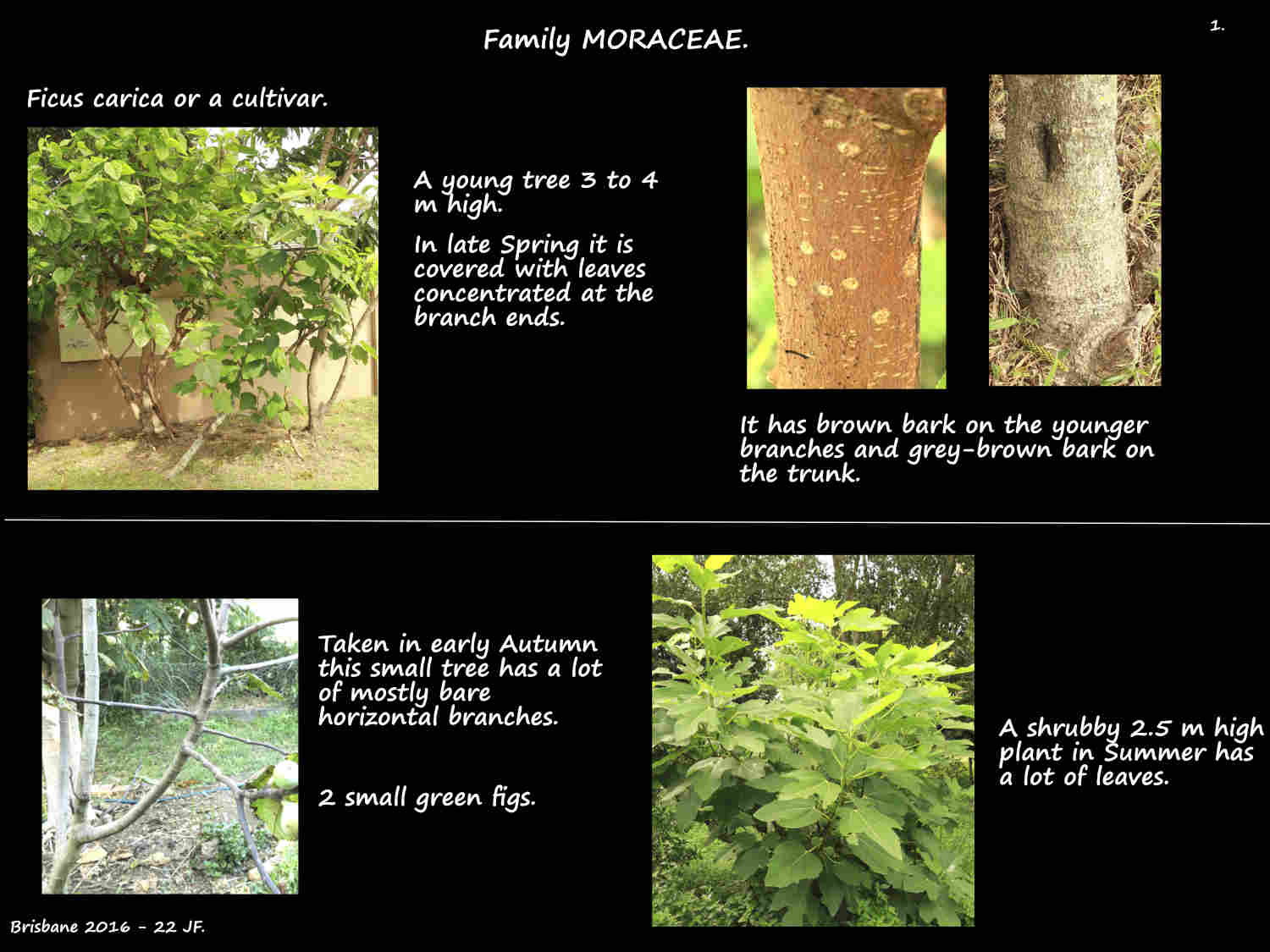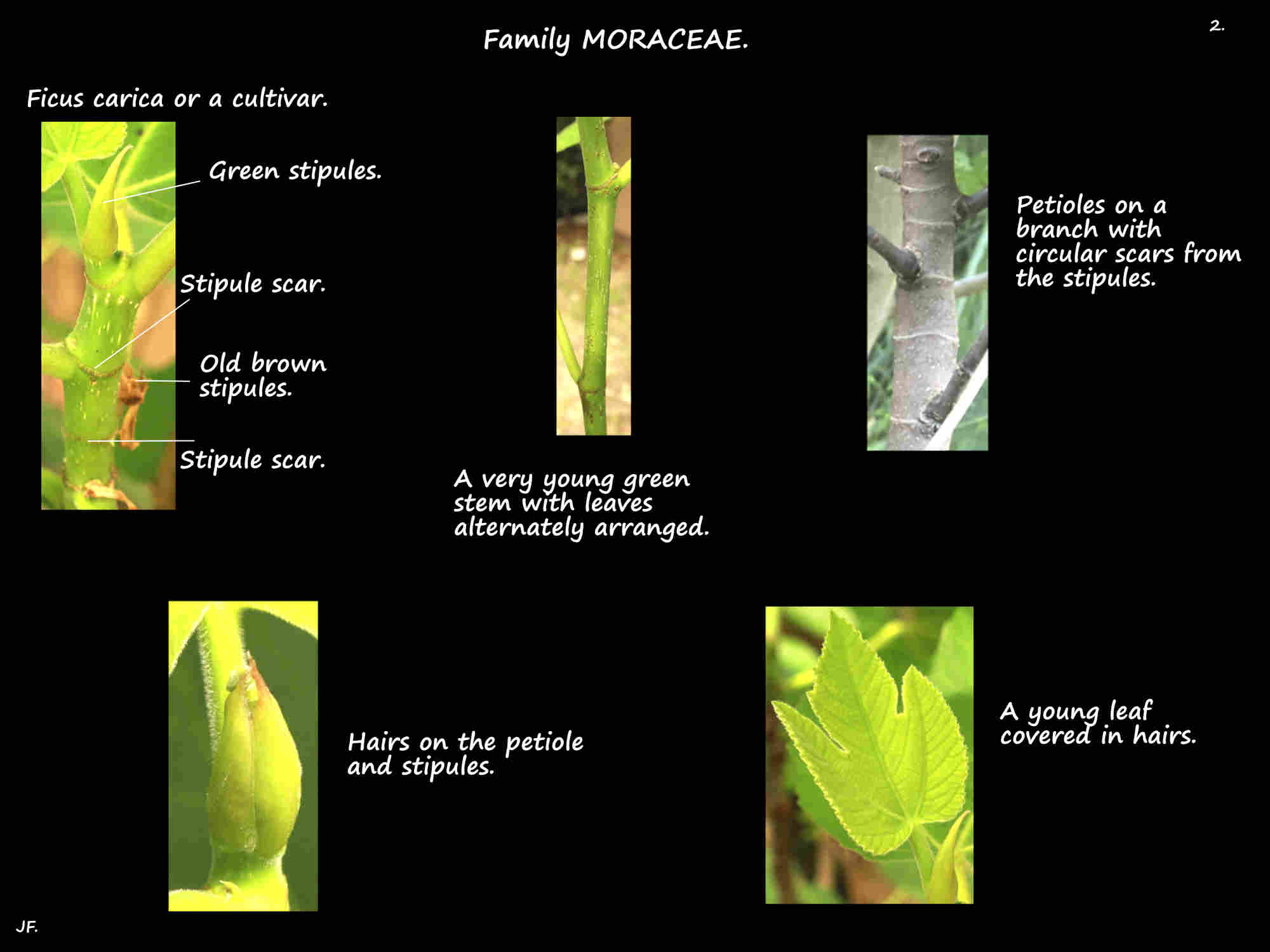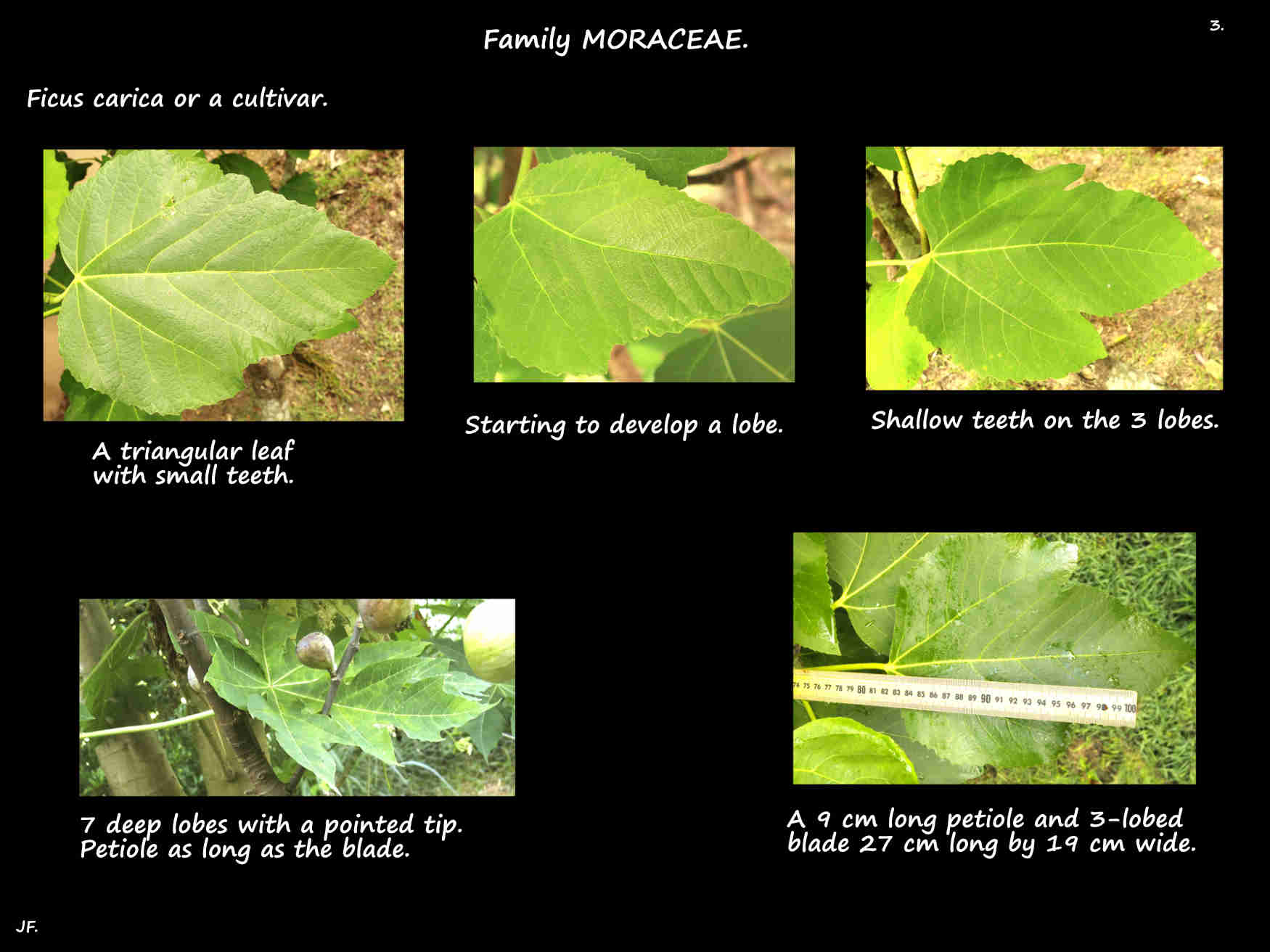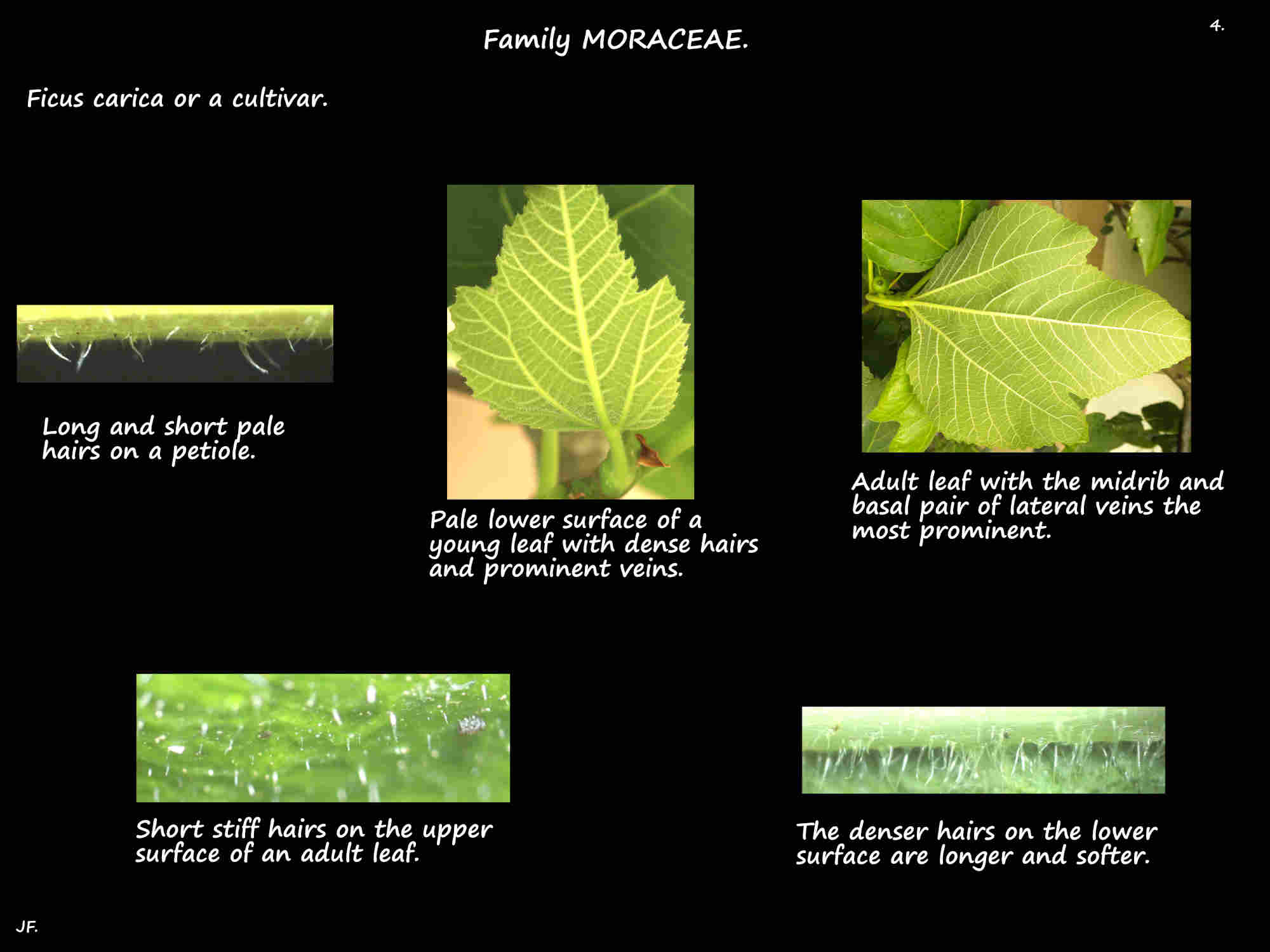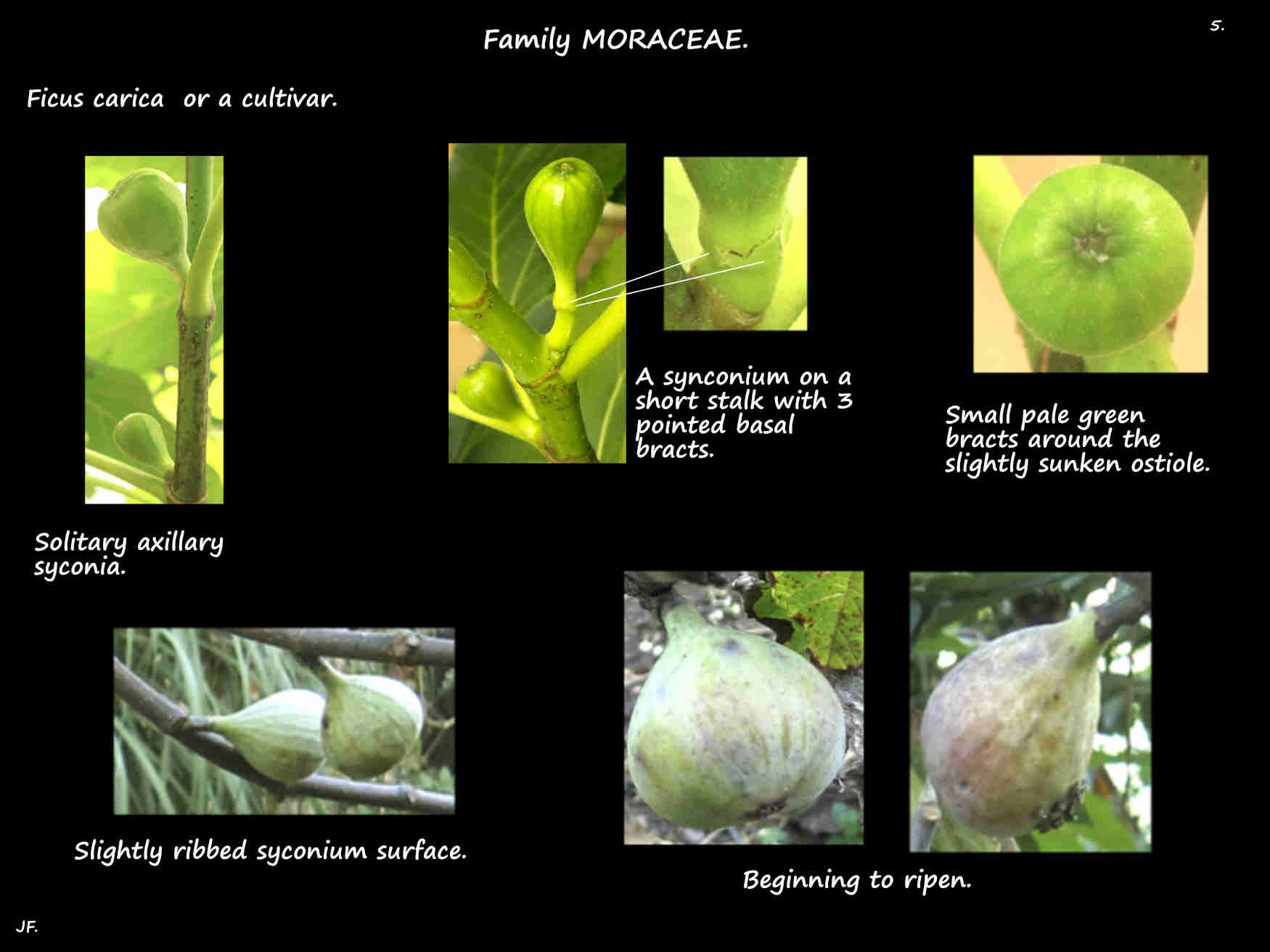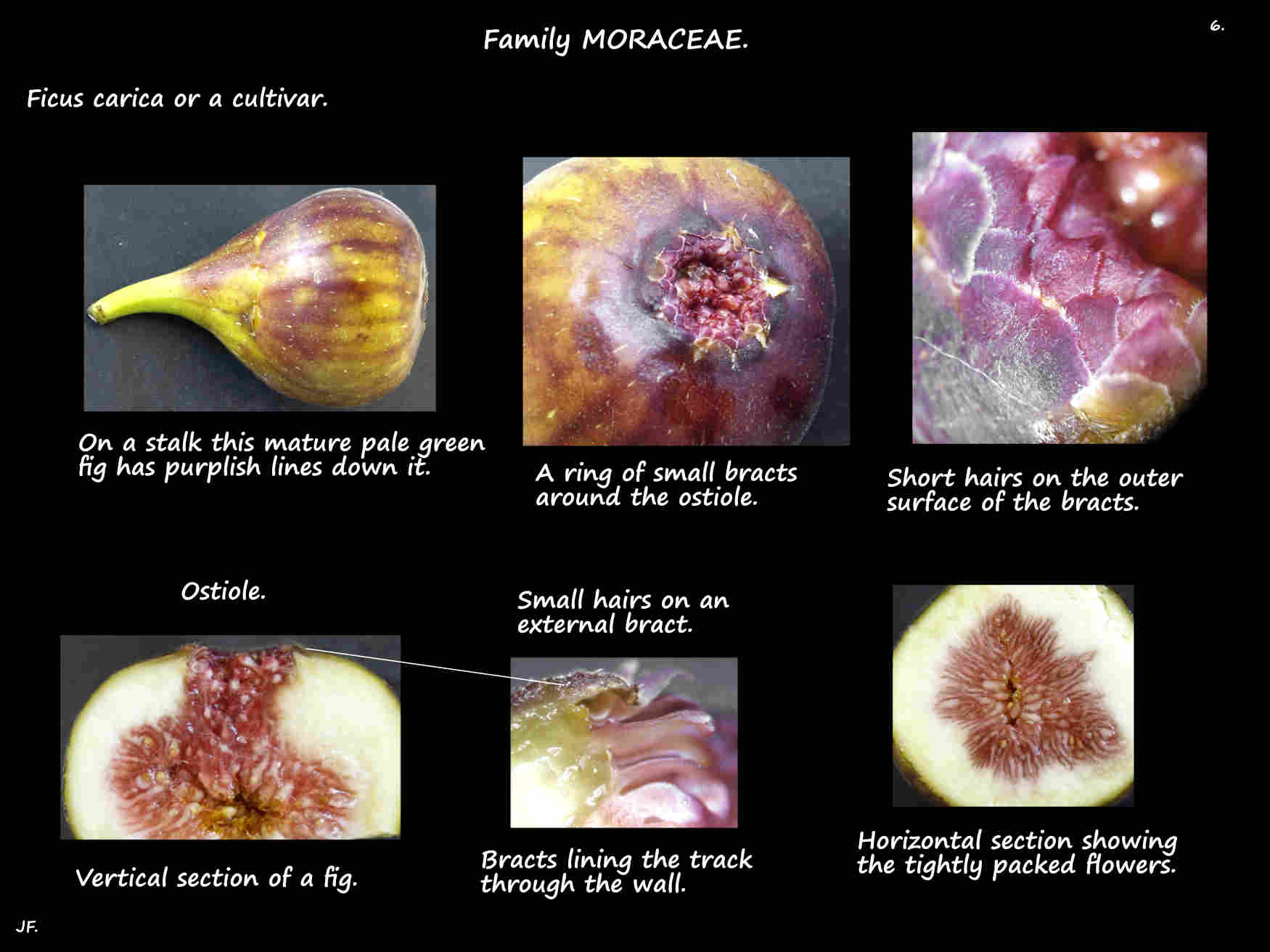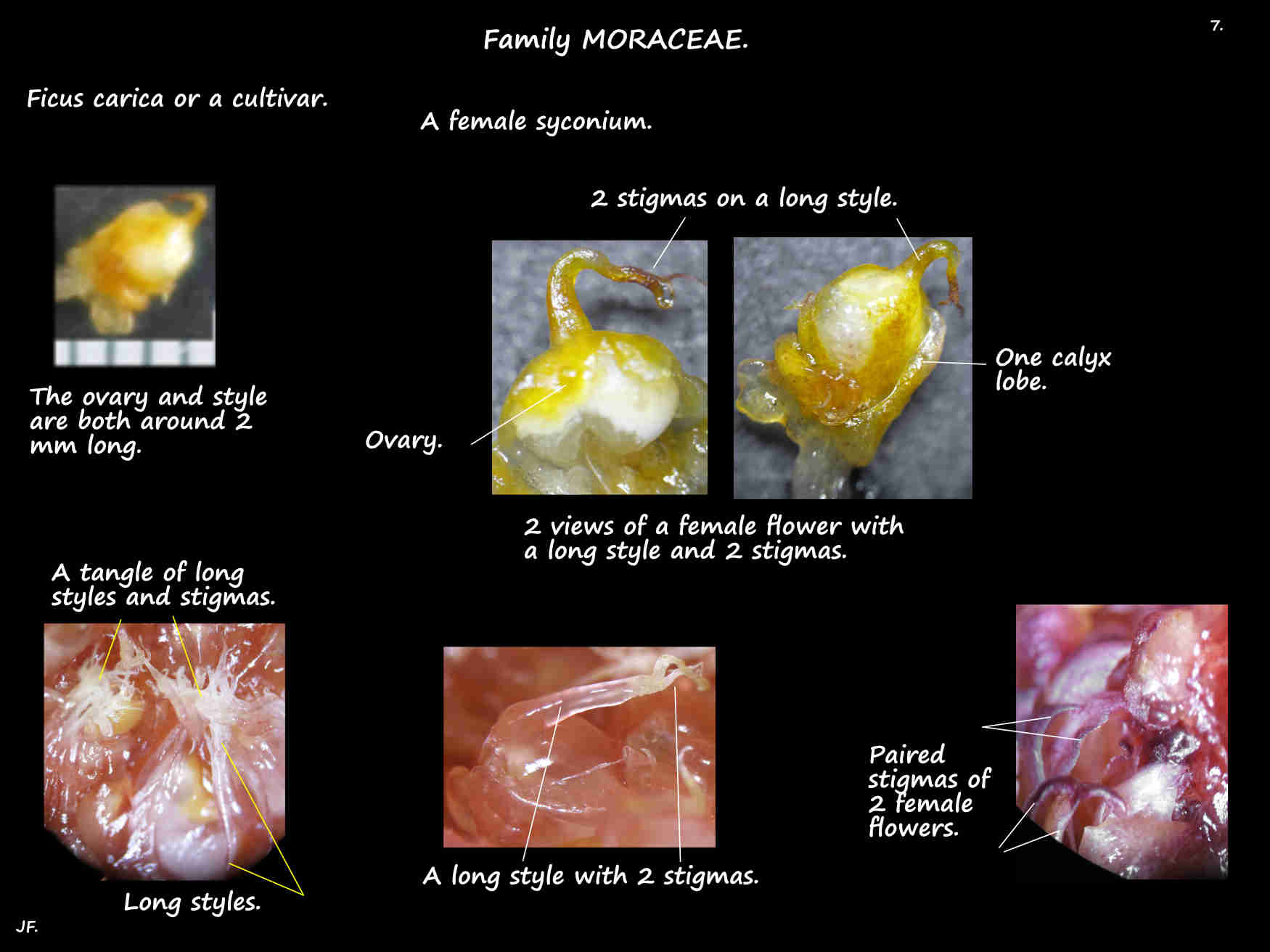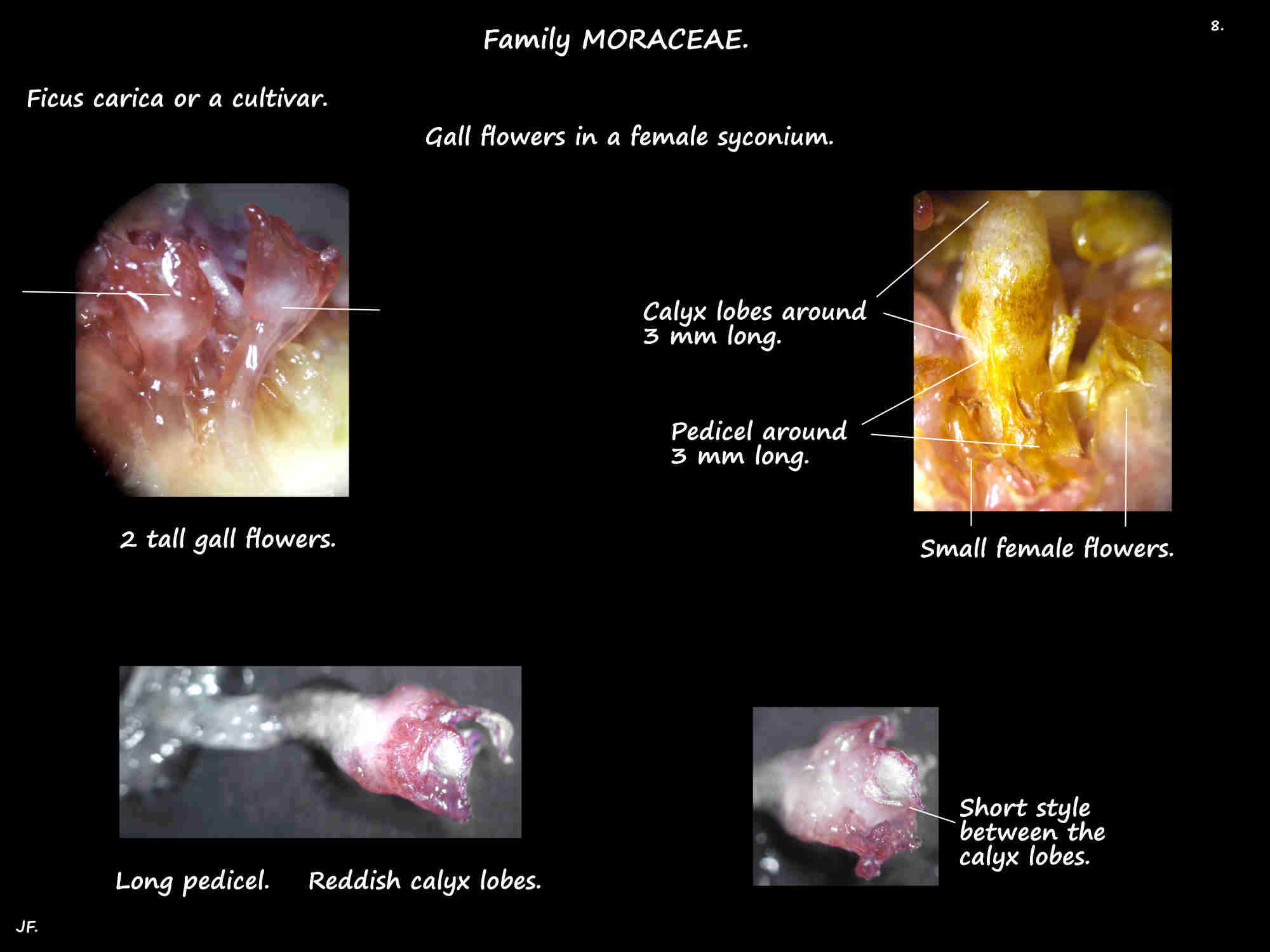Ficus carica.
The Common fig is in Family Moraceae > Genus Ficus > Subgenus Ficus.
Native to the Mediterranean and parts of Asia they are widely cultivated and naturalised in many countries.
There are a lot of cultivars.
They will grow as a large shrub or a small tree up to 10 m high.
Small branchlets have hairs that are gradually lost.
The bark on the trunk and large branches is pale grey and broken stems have a milky sap.
The deciduous leaves are alternately arranged in a spiral.
Leaf buds are protected by green stipules covered in short pale hairs.
They leave a narrow scar around the branch when they fall off.
Petioles, up to around 10 cm long are covered in long and short pale hairs.
The blades can be up to 30 cm long and almost as wide.
They are triangular, round or widely ovate with small teeth on the edge.
Most older leaves have 3 to 7 lobes that can extend more than half way to the midrib.
The lobes have a pointed tip and small teeth.
Young leaves are covered in hairs which persist on the adult leaves.
Stiff hairs on the upper surface makes the adult leaves feel rough.
The lower surface is paler and has denser hairs.
The solitary axillary inflorescences are a hollow pear-shaped syconium.
Syconia, up to 5 cm long are on a short stalk (peduncle) with 3 small pointed bracts at the top.
There are small bracts around and down the opening (ostiole) at the tip of the fig.
The inner wall of the syconium is lined by the small unisexual flowers.
Trees have syconia with either male or female flowers plus sterile gall flowers.
Male flowers, on a long pedicel are in a ring just below the ostiole.
They have (3) 5 pointed perianth segments (calyx lobes).
The (3) 5 stamens are on long filaments that hold the anthers well above the perianth.
Fertile female flowers, on a very short or no pedicel line the rest of the cavity.
They have 5 long narrow perianth segments and an ovary with one ovule and a lateral style.
Fertile females have a long style and 2 linear stigmas.
Gall flowers, on a stalk (pedicel) are scattered throughout male and female syconia.
They have a similar perianth and ovary to the fertile females and differ only in the style and stigma.
The short lateral style has a slightly funnel-shaped top and the 2 stigmas are fused to a varying degree.
The mature fruit are pear-shaped or obovate figs up to 6 or 8 cm long.
They mature from green to yellow then red or purplish-brown.
Ovaries in the fertile female flowers contain 1 small seed.
Common figs can be pollinated by a specific fig-wasp but most can develop into fruit without fertilisation.
This also applies to most of the many cultivars.
J.F.

